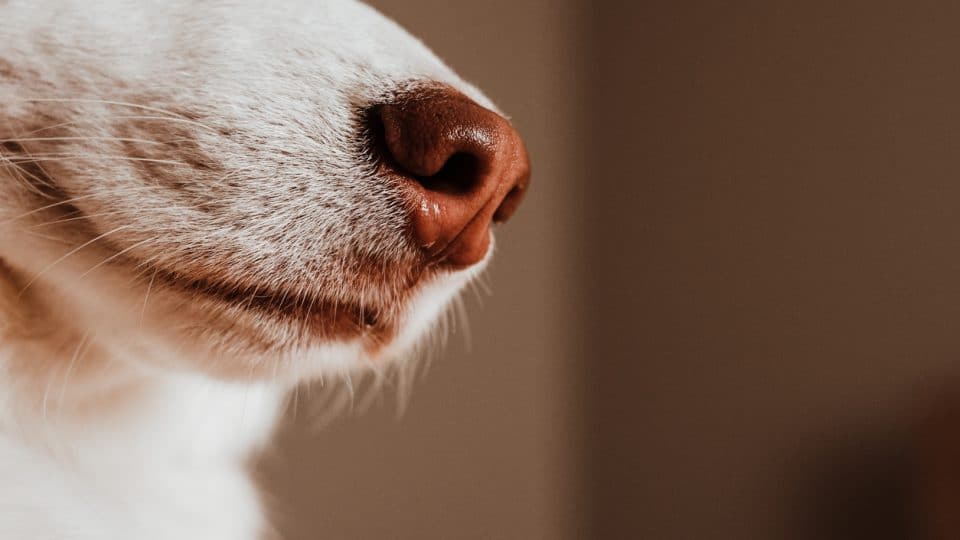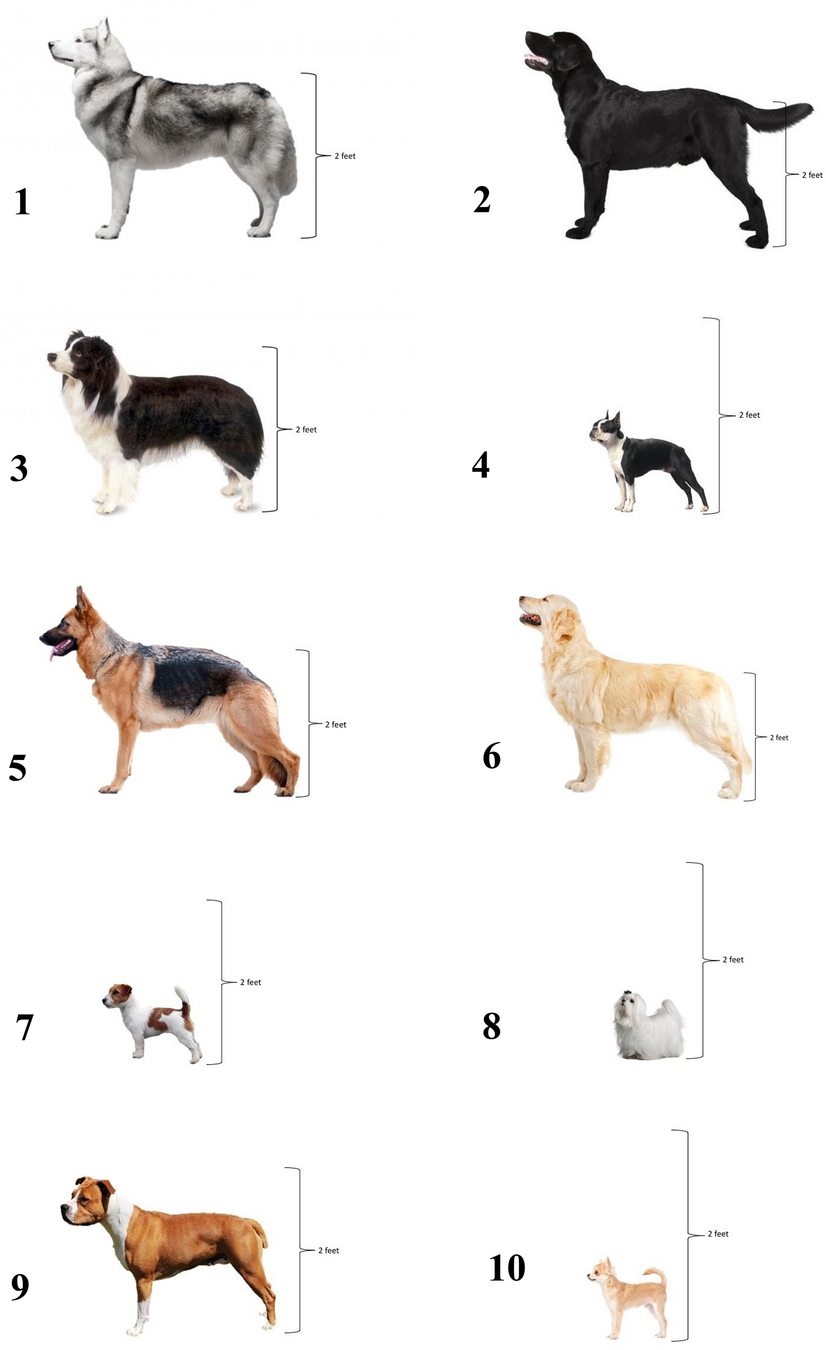Dogs have whiskers to help them navigate their surroundings and detect changes in their environment, such as movement or obstacles. Whiskers are not just a cute feature on a dog’s face; they serve a practical purpose.
Dogs rely on their sense of touch to gather information about their surroundings and navigate their environment. One of the critical tools they use for this is their whiskers. These long, stiff hairs on the muzzle, above the eyes, and on the chin are susceptible and provide valuable sensory input to the dog.
Like human fingertips can detect subtle changes in texture and movement, dog whiskers can detect vibrations and changes in air currents. We will explore why dogs have whiskers and the importance of these sensory organs in their everyday lives.

The Purpose Of Dog Whiskers
Dog whiskers, or vibrissae, are more than adorable facial features. These long and thick hairs serve an essential purpose in the lives of our furry friends. Understanding the purpose behind these whiskers can help us appreciate their role in a dog’s sensory perception and navigation.
Enhancing Sensory Perception
Dog whiskers are highly sensitive to the slightest touch or movement in the surrounding environment. The whiskers are equipped with nerve endings, which send signals directly to the dog’s brain, allowing them to gather a wealth of information about their surroundings. From detecting the subtle movements of prey to gauging the width of narrow spaces, dog whiskers play a vital role in their sensory perception.
Like a human’s fingertips, a dog’s whiskers help them explore and gather information from the world around them. These specialized hairs are so sensitive that they can detect changes in air currents, helping dogs anticipate incoming objects or potential dangers. When the whiskers touch an object, they provide vital feedback about its texture, shape, and position, aiding dogs in making split-second decisions.
Facilitating Navigation And Movement
Whiskers also play a crucial role in a dog’s navigation and movement. The positioning of these vibrissae is not random; they are strategically arranged on a dog’s face. Dogs typically have whiskers above their eyes, on the sides of their muzzles, and their lower jaws.
These whiskers act as specialized sensors that help dogs to navigate and determine their spatial surroundings. When dogs navigate through tight spaces, such as narrow passages or bushes, their whiskers deflect or bend, indicating potential obstacles to avoid.
Moreover, during underwater exploration, whiskers help dogs sense the height or depth of the water surface and navigate accordingly. This is particularly useful for working dogs, like water rescue dogs, who rely on their senses to perform their tasks effectively.
In summary, dog whiskers are not just there for decorative purposes but are integral in enhancing sensory perception and facilitating navigation and movement. Understanding the significance of these vibrissae can give us a deeper appreciation for our furry companions and the remarkable adaptations that make them such incredible animals.

How Dog Whiskers Work
How Dog Whiskers Work:
Have you ever wondered why dogs have those cute little whiskers on their faces? Well, they may seem like just another adorable feature of our furry friends, but dog whiskers serve an essential purpose. They play a crucial role in a dog’s sensory perception, helping them navigate and interact with the world around them. So, let’s dive deeper into the fascinating world of dog whiskers and understand how they work!
Whisker Anatomy:
Before we explore how dog whiskers function, let’s take a quick look at their anatomy. Dog whiskers, technically known as vibrissae, have long, coarse hairs that are thicker and stiffer than the fur on the rest of their body. They are usually found in clusters around the muzzle, above the eyes, and on the cheeks.
These special hairs are embedded much deeper into the dog’s skin than regular fur and have a rich supply of nerves and blood vessels. This unique structure allows whiskers to act as susceptible touch receptors.
Mechanisms of Sensory Detection:
Now that we know a bit about the physical characteristics of dog whiskers let’s uncover their mechanism of sensory detection. Whiskers are incredibly adept at detecting even the slightest changes in their environment, making dogs highly attuned to their surroundings.
Dog whiskers are extremely sensitive to touch, vibrations, and changes in air currents. When a dog moves through its surroundings, the whiskers come into contact with objects, people, or other animals, which triggers a response in the sensory nerves connected to the base of each whisker. These nerves send signals to the dog’s brain, providing crucial information about the shape, size, and location of the objects it encounters.
Dog whiskers act as a specialized radar system, helping dogs navigate tight spaces and avoid obstacles. They are instrumental at night or in dark environments when a dog’s vision may be limited.
Overall, dog whiskers are not just a charming aspect of their appearance; they serve a practical purpose by enhancing their sensory perception. These remarkable appendages allow dogs to explore their environment, sense danger, and communicate with other animals.
Whisker Care And Maintenance
When it comes to our furry friends, we often marvel at their unique features, such as their wagging tails or perky ears. But have you ever wondered why dogs have whiskers? These delicate sensory organs serve an essential purpose: helping our canine companions navigate the world around them. That’s why it’s crucial to understand how to care for and maintain their whiskers. This section will explore the pros and cons of trimming whiskers and provide tips for keeping your dog’s whiskers healthy.
Trimming Whiskers: Pros And Cons
As responsible dog owners, we may contemplate whether to trim our dog’s whiskers. While grooming their facial hair for aesthetic purposes may seem tempting, weighing the pros and cons is essential.
The Pros of Trimming Whiskers
- Enhanced aesthetics, especially for certain dog breeds
- Potentially reduces mess during mealtime
The Cons of Trimming Whiskers
- Impaired sensory perception, affecting their ability to detect changes in the environment
- Increased likelihood of accidents due to reduced sensory input
- Potential discomfort or pain during the trimming process
Tips For Keeping Whiskers Healthy
Caring for your dog’s whiskers is essential to maintaining their overall well-being. Here are some tips to ensure your furry friend’s whiskers stay healthy and functional:
- Avoid trimming their whiskers unless medically necessary
- Regularly inspect their whiskers for any signs of damage or infection
- Keep food and water bowls clean to prevent contamination and potential whisker irritation
- Gently brush their whiskers using a soft bristle brush to remove any debris or tangles
- Ensure their whiskers have enough room to move freely without being restricted by a tight collar or muzzle
By following these tips and understanding the importance of whiskers, you can provide your canine companion with optimal care and support for their sensory experiences.
:strip_icc()/GettyImages-1070648336-1ec889be1a8e4bdbbefe8c1214642ed4.jpg)
Frequently Asked Questions On Why Do Dogs Have Whiskers?
Why Do Dogs Have Whiskers?
Dogs have whiskers to help them gather information about their surroundings. The whiskers, also known as vibrissae, are highly sensitive and can detect the slightest changes in the air or movement nearby. These invaluable sensory tools assist dogs in navigating their environment, catching prey, and even communicating with other animals.
Conclusion
Dogs have whiskers for several vital reasons. These specialized hairs help them navigate their surroundings, communicate with other animals, and protect their sensitive noses. By understanding the purpose of whiskers, we can better appreciate dogs’ incredible adaptations.
So, next time you see your furry friend’s whiskers twitching, remember that they are an essential part of their sensory toolkit. Embrace the wonder of these fascinating appendages and marvel at the remarkable world of dogs.



